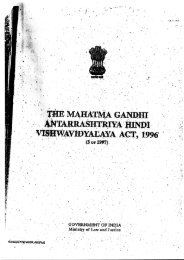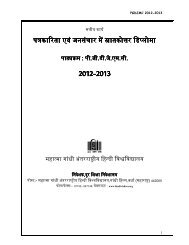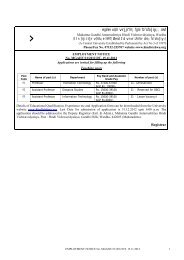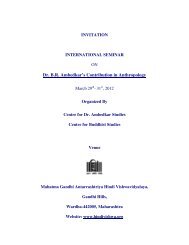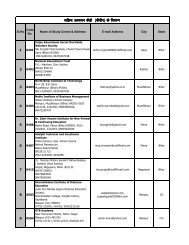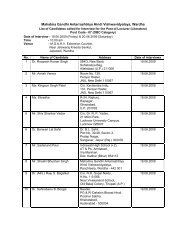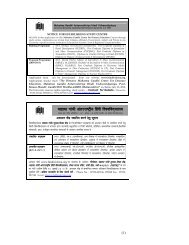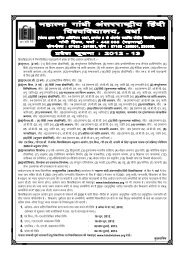Mamta Kalia
Mamta Kalia
Mamta Kalia
Create successful ePaper yourself
Turn your PDF publications into a flip-book with our unique Google optimized e-Paper software.
enterprising elements with more capital<br />
organisation and political patronage at<br />
their disposal. They suddenly began to<br />
feel like strangers in their native land.<br />
Not only this, a large section of<br />
Uttarakhand’s population, children,<br />
youth and adults, found itself being drawn<br />
to large and medium towns outside. While<br />
the common people began seeking<br />
domestic jobs and work as coolies, peons,<br />
watchmen etc.; the educated section<br />
sought clerical and similar other work.<br />
Only a few persons with higher education<br />
could be absorbed in high government<br />
jobs and other professions with high<br />
income.<br />
In this way, in the decades after<br />
independence, processes of disruption<br />
of Uttarakhand’s traditional economic<br />
and social system, which had started<br />
during the British rule, gathered<br />
momentum. But the process of<br />
reconstruction of the economic structure<br />
and the society which should have gone<br />
on side by side in the post-independence<br />
period was palpably slow. Because of<br />
corruption and red-tapism it also lacked<br />
popular support and also was wanting<br />
in its concern for the people. In other<br />
words, the security the common people,<br />
particularly the women were assured of<br />
in the traditional system because of their<br />
collective rights and integrated and<br />
cohesive community life, got destroyed<br />
with this disruption of the old pattern.<br />
The community rights were snatched<br />
away by heartless government<br />
departments on the one hand, and by<br />
the newly rich class emerging strongly<br />
out of road building, forest based<br />
enterprises, hotels, horticulture etc. on<br />
the other.<br />
These negative developments through<br />
their disruptive effect on the peoples’<br />
life have given rise to this anger,<br />
discontent, sense of insecurity and dissent<br />
that has made local sentiment and<br />
consciousness so explosive.<br />
When we talk of basic changes in<br />
the traditional structure we should<br />
remember that because of its geographical<br />
position, Uttarakhand’s economic, social<br />
and cultural relations with neighbouring<br />
hill countries like Nepal, Tibet, etc. were<br />
closer than with the plains within the<br />
country. Not only that, the entire Terai<br />
area provided work to its working people<br />
during the winter months when economic<br />
activities in the hills were at a low ebb.<br />
Tibet’s incorporation into China and<br />
deterioration in India-China relations,<br />
increased vigilance and restrictions on<br />
traditional exchanges on India-Nepal<br />
border coupled with resettlement of the<br />
Punjab refugees in the Terai area leading<br />
to decline in the job opportunities for<br />
the hill people; all these negative factors<br />
had their ill effect on their lives. The<br />
prosperous Bhotia community was pushed<br />
into a state of penury because of this<br />
disruption. Similarly, the transport of<br />
goods by trucks from one place to another<br />
rendered unemployed thousands of<br />
traders and porters who had been engaged<br />
in hauling of goods on mules or on their<br />
heads.<br />
April-June 2010 :: 41




